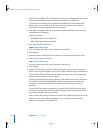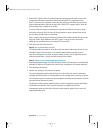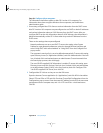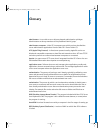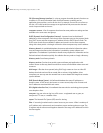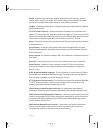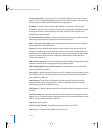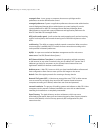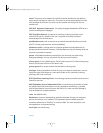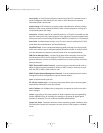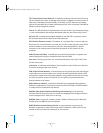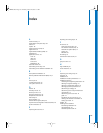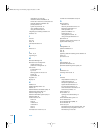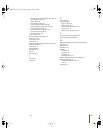
132 Glossary
owner The person who created a file or folder and who therefore has the ability to
assign access privileges for other users. The owner of an item automatically has read/
write privileges for that item. An owner can also transfer ownership of an item to
another user.
PHP (PHP: Hypertext Preprocessor) A scripting language embedded in HTML that is
used to create dynamic webpages.
POP (Post Office Protocol) A protocol for retrieving incoming mail. After a user
retrieves POP mail, it is stored on the user’s computer and usually is deleted
automatically from the mail server.
predefined accounts User accounts that are created automatically when you install
Mac OS X. Some group accounts are also predefined.
preferences cache A storage place for computer preferences and preferences for
groups associated with that computer. Cached preferences help you manage local user
accounts on portable computers.
presets Initial default attributes you specify for new accounts you create using
Workgroup Manager. You can use presets only during account creation.
primary group A user’s default group. The file system uses the ID of the primary group
when a user accesses a file he or she doesn’t own.
primary group ID A unique number that identifies a primary group.
privileges Settings that define the kind of access users have to shared items. You can
assign four types of privileges to a share point, folder, or file: read/write, read-only,
write-only, and none (no access).
QTSS (QuickTime Streaming Server) A technology that lets you deliver media over the
Internet in real time.
RAID (Redundant Array of Independent Disks) A hard disk array that either increases
the speed of disk input and output or mirrors the data for redundancy, or provides
both of these features. Users may access the RAID as if it were one drive, although it
may be divided into multiple partitions.
realm See WebDAV realm.
Rendezvous A protocol developed by Apple for automatic discovery of computers,
devices, and services on IP networks. This proposed Internet standard protocol is
sometimes referred to as “ZeroConf” or “multicast DNS.” For more information, visit
www.apple.com or www.zeroconf.org.
search path See search policy.
LL2343.Book Page 132 Thursday, August 14, 2003 5:12 PM



